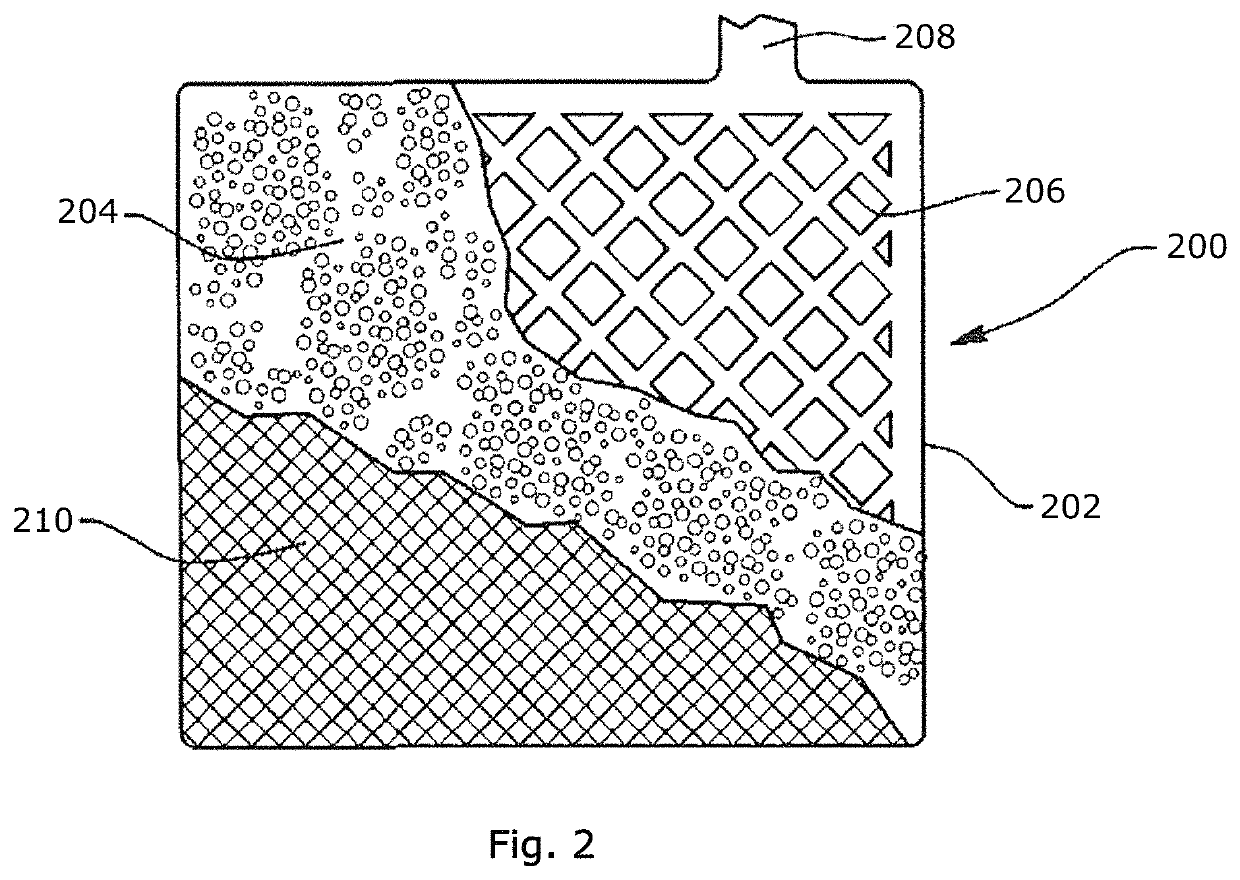Fiber-containing mats with additives for improved performance of lead acid batteries
a technology of additives and fibers, which is applied in the direction of secondary cell servicing/maintenance, cell components, sustainable manufacturing/processing, etc., can solve the problems of short lifetime, poor choice of additives for direct addition of benzyl benzoate to lead acid batteries, and easy hydrolysis of the ester bond in benzyl benzoate, etc., to prolong the operational performance and lifetime of lead acid batteries
- Summary
- Abstract
- Description
- Claims
- Application Information
AI Technical Summary
Benefits of technology
Problems solved by technology
Method used
Image
Examples
example 1
[0071]A non-woven glass mat (0.6 lb / sq, where “lb / sq” is equal to lb / (100 square feet)) was made with a wet-laid machine using acid resistant glass fiber (¾″ K249 T from Johns Manville). The glass fibers had a nominal fiber diameter of 13 μm and a length of 1.9 cm. An alkyl acrylate binder (Rhoplex® HA-16 from Dow Chemical) was used to bind the glass fibers (Loss On Ignition (LOI) was 18 wt. %). A glycol ester (TegMeR® 812 from Halister) was added to the binder composition as the additive in an amount such that the solids ratio of the additive to the binder composition was 1%. Specifically, after preparing the Rhoplex® HA-16 binder with 20% solids, the TegMeR® 812 was added such that it was 0.2 wt. % in the binder composition to achieve the 1 wt. % solids ratio of additive / binder. It was assumed that a proportional addition of the additive to binder composition was applied to the non-woven glass mat to provide 0.18 wt. % of the additive on the mat (at 18% LOI). The combination of th...
example 2
[0075]A non-woven glass mat (0.6 lb / sq) was made with a wet-laid machine using acid resistant glass fiber (¾″ K249 T from Johns Manville). The glass fibers had a nominal fiber diameter of 13 μm and a length of 1.9 cm. An alkyl acrylate binder composition (Rhoplex® HA-16 from Dow Chemical) was used to bind the glass fibers (LOI 18 wt. %). Benzyl benzoate was added to the binder composition as the additive in an amount such that the solids ratio of the additive to the binder composition was 0.5%. It was assumed that a proportional addition of the additive to binder composition was applied to the non-woven glass mat to provide 0.09 wt. % of the additive on the mat. The combination of the non-woven glass mat and binder composition was then cured to form an exemplary fiber-containing mat with a glycol ester additive.
[0076]The hydrogen evolution potential of the above-described fiber-containing mat with the benzyl benzoate additive was then compared with a control sample of the sulfuric a...
example 3
[0080]We conducted Electrochemical Compatibility (ECC) tests by direct addition to evaluate the impact of TegMeR® 812 (from Hallstar). In this method, the quantity of the additive (e.g., TegMeR® 812) is known and can be changed easily. The hydrogen evolution potential of the glycol ester additive was compared with a control sample of the sulfuric acid electrolyte. The only difference from the method described in Example 1 and 2 is that a designated amount of the additive TegMeR® 812 is added instead of the leachate.
[0081]Cathodic voltammetry scans were performed as follows: First, a 100 ml sample of sulfuric acid (specific gravity of 1.210 or 28.9 wt. % H2SO4 in water) was added into the glass cell and a cathodic scan was performed (scanned curve labeled “Blank” in FIG. 8). Next, a 1 ml dose of the additive solution was added into the glass cell so the additive has the designated concentration, for example, 10 ppm. Then a cathodic scan was performed (scanned curve labeled “10 ppm” i...
PUM
| Property | Measurement | Unit |
|---|---|---|
| diameter | aaaaa | aaaaa |
| wt. % | aaaaa | aaaaa |
| wt. % | aaaaa | aaaaa |
Abstract
Description
Claims
Application Information
 Login to View More
Login to View More - R&D
- Intellectual Property
- Life Sciences
- Materials
- Tech Scout
- Unparalleled Data Quality
- Higher Quality Content
- 60% Fewer Hallucinations
Browse by: Latest US Patents, China's latest patents, Technical Efficacy Thesaurus, Application Domain, Technology Topic, Popular Technical Reports.
© 2025 PatSnap. All rights reserved.Legal|Privacy policy|Modern Slavery Act Transparency Statement|Sitemap|About US| Contact US: help@patsnap.com



